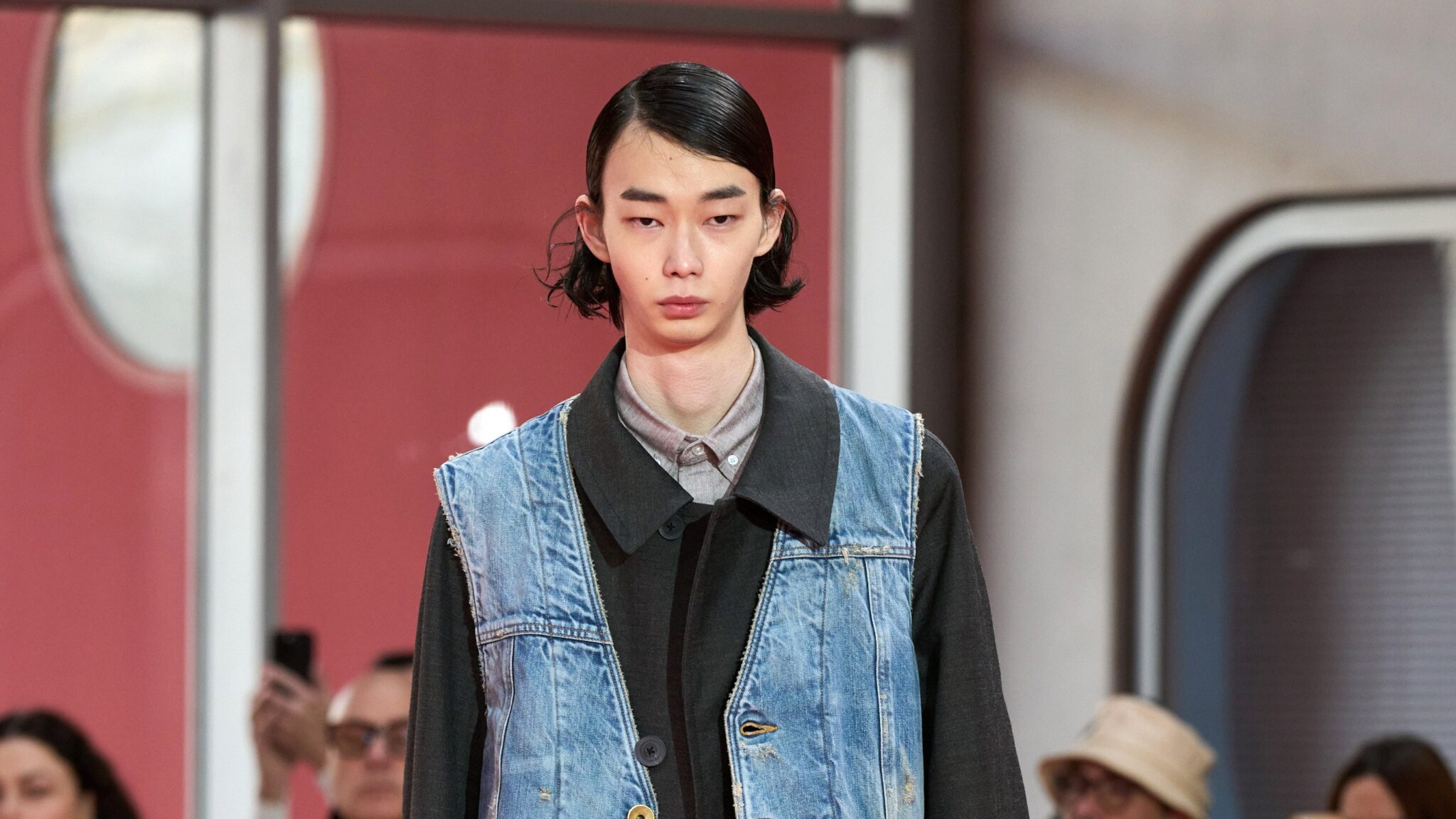Backstage, Kolor’s Junichi Abe tried to explain what happens when reworking standard clothing creates a sense of uncertainty. He apologized that his words may not have reflected the intent of the collection. Of course, dissecting clothes can sometimes do them a disservice. And in this case, the craftsmanship spoke as much to the season’s intent as any description.
We were back on the Pierre and Marie Curie University campus (scorching heat last June; fingers numb today) and the models arrived via a multi-level escalator with groovy, synthesized music that gave the impression of them descending almost robotically, despite their repeated visits. denim and outerwear. The ‘uncanny valley’ is more aesthetic than a place, but it still felt like this was our destination.
There, the construction balance in sophisticated garments such as a duffle coat or a classic shirt was destabilized, so that the collar of the former was missing or the collar of the latter had shifted. Nothing too dramatic, mind you. Just enough to make you wonder if this ultimately reinforced the wearer’s identity or felt unnecessary. But Kolor’s ongoing exploration goes beyond deconstruction and reconstruction, it’s also about normalizing it.
So between the workwear jackets laced with quilted layers; pea coats with tuxedo lapels; varsity jackets with striped ribbing moved to the back; waistbands removed and hung an inch higher; and women’s slingbacks with fleece toes, the looks exuded more character than in their typical state. Especially since there were also random jewels and gold embroidery.
Abe wore the original prototype of the dyed chinos that appeared in the show. He said he came from a Kolor collection almost 20 years ago and gave the studio permission to experiment. Apparently the effect appealed to them enough to extend the paint marks to sailor’s keels and boat shoes. The iterative and artistic development that has gone into this season’s pieces will certainly be noticed by those seduced not only by the final product, but also by the process itself. Whether intentional or an error in translation, the press copy referred to the major garments as “products known as ‘masterpieces’.” When asked if he considers himself an artist – especially given all these ideas about reconfiguration and collage – Abe replied: “I’m a designer, a production designer, a clothing designer.” He is also a designer who constantly strives to challenge what we take for granted, without the need for further explanation.





